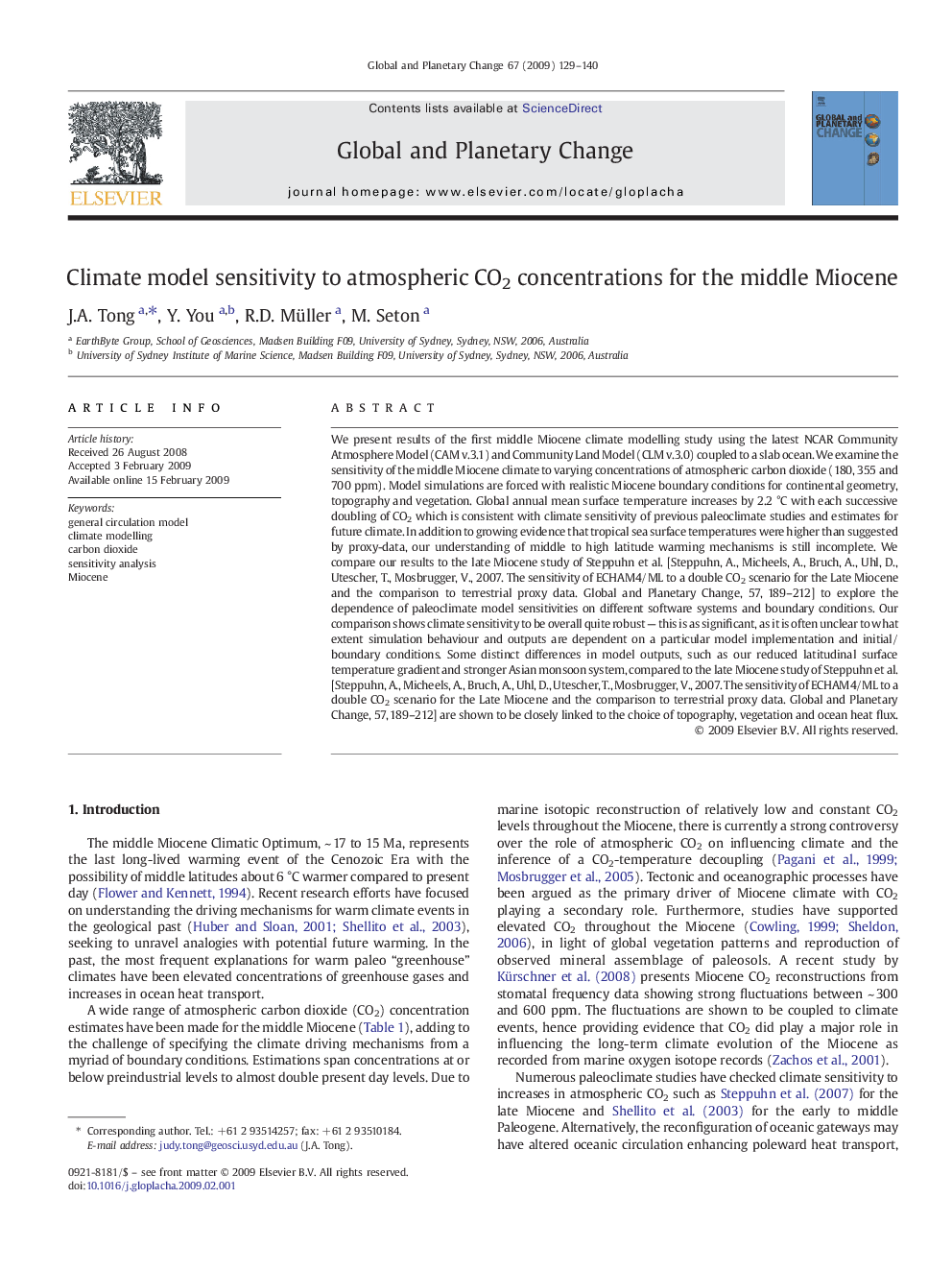| Article ID | Journal | Published Year | Pages | File Type |
|---|---|---|---|---|
| 4464042 | Global and Planetary Change | 2009 | 12 Pages |
We present results of the first middle Miocene climate modelling study using the latest NCAR Community Atmosphere Model (CAM v.3.1) and Community Land Model (CLM v.3.0) coupled to a slab ocean. We examine the sensitivity of the middle Miocene climate to varying concentrations of atmospheric carbon dioxide (180, 355 and 700 ppm). Model simulations are forced with realistic Miocene boundary conditions for continental geometry, topography and vegetation. Global annual mean surface temperature increases by 2.2 °C with each successive doubling of CO2 which is consistent with climate sensitivity of previous paleoclimate studies and estimates for future climate. In addition to growing evidence that tropical sea surface temperatures were higher than suggested by proxy-data, our understanding of middle to high latitude warming mechanisms is still incomplete. We compare our results to the late Miocene study of Steppuhn et al. [Steppuhn, A., Micheels, A., Bruch, A., Uhl, D., Utescher, T., Mosbrugger, V., 2007. The sensitivity of ECHAM4/ML to a double CO2 scenario for the Late Miocene and the comparison to terrestrial proxy data. Global and Planetary Change, 57, 189–212] to explore the dependence of paleoclimate model sensitivities on different software systems and boundary conditions. Our comparison shows climate sensitivity to be overall quite robust — this is as significant, as it is often unclear to what extent simulation behaviour and outputs are dependent on a particular model implementation and initial/boundary conditions. Some distinct differences in model outputs, such as our reduced latitudinal surface temperature gradient and stronger Asian monsoon system, compared to the late Miocene study of Steppuhn et al. [Steppuhn, A., Micheels, A., Bruch, A., Uhl, D., Utescher, T., Mosbrugger, V., 2007. The sensitivity of ECHAM4/ML to a double CO2 scenario for the Late Miocene and the comparison to terrestrial proxy data. Global and Planetary Change, 57, 189–212] are shown to be closely linked to the choice of topography, vegetation and ocean heat flux.
